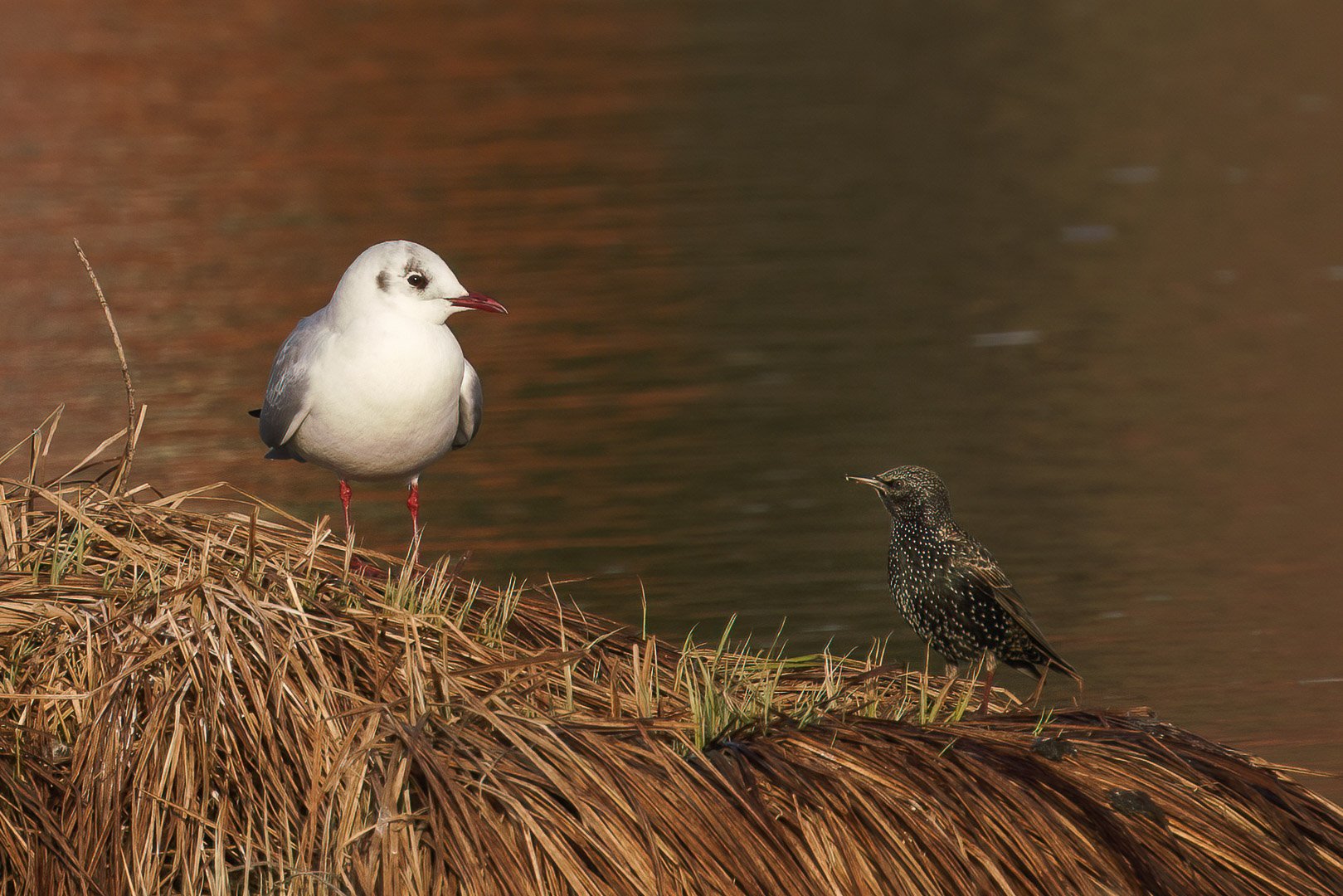Controlled Environment — Bird Photography for Beginners
Black-headed Gulls and Starling at Small Lake
Hello, dear friends of nature photography,
If you are interested in nature photography, you probably want to capture the wilderness right outside your door or while traveling – and for various reasons. As a beginner, however, it can be frustrating if the hoped-for successes don't come immediately, even though you've already dealt with techniques and camera functions. Especially at the beginning, this can be really overwhelming.
With my articles, I want to support you in better preparing for your upcoming adventures in the wild, especially as a beginner. At this point, I would like to emphasize that none of this is rocket science, and you don't need €40,000 worth of equipment to take impressive wildlife photos. The definition of “impressive wildlife photos” should depend on your expectations and not on the opinion of others. You should have fun, and when you look at your pictures at the end of the day, you should feel joy and remember having a good time. This is the case for me, as I primarily do this for myself.
In this article, we will focus on the topic of the "controlled environment." Controlled environments refer to settings or scenarios where certain conditions and factors are controlled or predictable to make photographing wildlife easier. Examples include bird feeding stations in your garden, birdwatching hides, wildlife enclosures, or city parks.
For those who might think that this isn't “wildlife” because certain factors are controllable, I can only say that everyone is free to set their own definition. The truth is, in nature photography, we try to learn what and how to control various factors. There are many facets to this, starting from a rented hide and ending with the choice of composition and background in the picture.
Especially for beginners, controlled environments make it easier to access animal species, even those that are difficult to photograph in the wild. Here, you can also learn a lot about animal behavior as a photographer without unnecessarily disturbing them, and gain practical experience. Such environments usually offer more comfort for the photographer and safety for the animals. You have fewer concerns about unforeseen dangers or about disturbing animals during sensitive times, such as breeding seasons.
As a beginner, you can refine your techniques and study animal behavior in controlled environments. This is particularly helpful before venturing into less controllable or unpredictable natural environments. Additionally, you don't have to wait for hours for the perfect moment, as animals are generally easier to observe and photograph.
I recommend starting with simple subjects like waterfowl in city parks and then moving on to more challenging subjects. Various locations to try out include city parks, bodies of water with gull colonies, cemeteries, bird feeding stations in gardens, or wildlife parks.
What are the benefits of starting in such an environment?
The goal of the exercise is to put your theoretical knowledge into practice. This will later enable you to draw on your acquired knowledge in the wild without much thought or hesitation. A controlled environment helps you try out different camera settings, such as for stationary or fast-moving animals, and various photographic styles and techniques.
City parks often provide a good option for this. In many parks, there are usually small ponds where you can find various waterfowl that are used to people and therefore less shy. This increases the chance that the animals will occupy most of your image composition, such as in portraits. In these environments, you can take your time and focus on photography without having to search for the animals first.
Before I conclude, I would like to briefly show you what animals you might find in city parks.
City Parks
Pigeons
Sparrows
Blackbirds
Tits
Magpies
Crows
Various waterfowl
Grey Herons
Nuthatches
Robins
Kingfishers
This list is, of course, not exhaustive, as there are many other bird species living in city parks, which also depends heavily on the size and environment.
Canon EOS 550D from 2010 with a Canon EF-S 55 - 250 mm f4/5.6 lens
Conclusion:
In summary, nature photography for beginners in the wild can be a significant challenge, especially if you have high expectations. It's also important to emphasize that you don't need expensive equipment for impressive wildlife photos and that the enjoyment of photography and the memories of beautiful experiences should be the main focus.
Controlled environments, such as bird feeding stations, birdwatching hides, wildlife enclosures, or city parks, can help not only beginners improve their techniques and study animal behavior before venturing into less controllable environments. As a recommendation for starting bird photography, simple subjects like waterfowl in city parks can serve as a good entry point before moving on to more challenging subjects. The list of bird species you can find in city parks is long and varies depending on the size and environment.
A Tip, Not Just for Beginners:
When traveling to other regions or countries, parks are also great places to photograph bird species that you wouldn't normally find at home. Otherwise, the chances of getting such photos are usually slim, as you often don't have unlimited time while traveling.
I hope this information helps you, and I look forward to discussing two of the most important camera settings in my next article.
Until then, good light!









